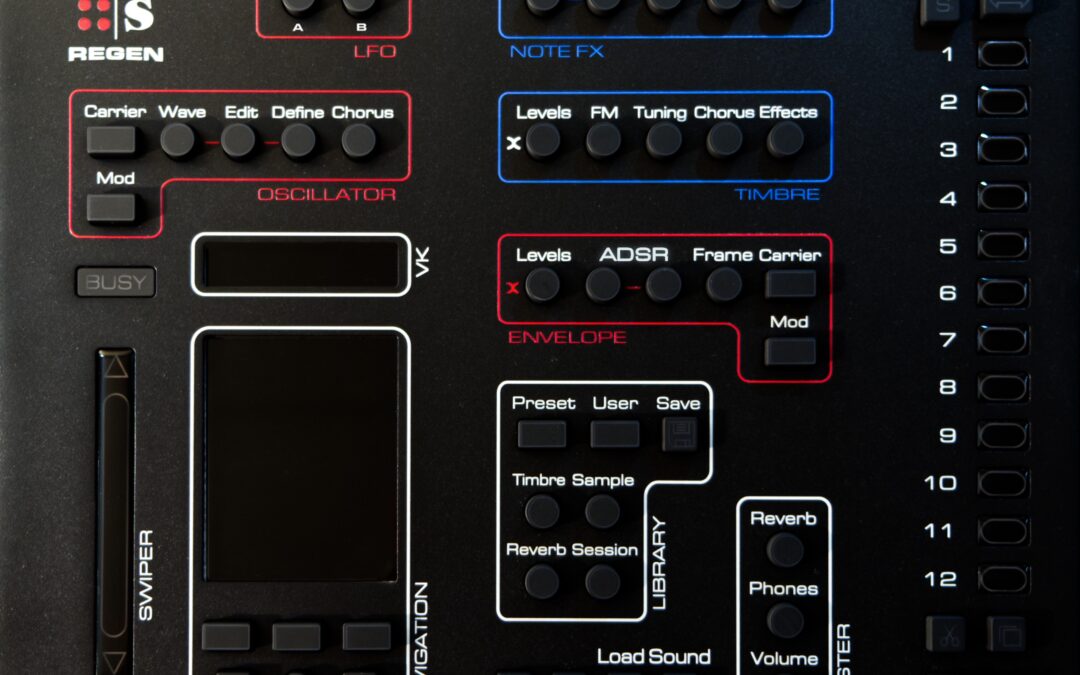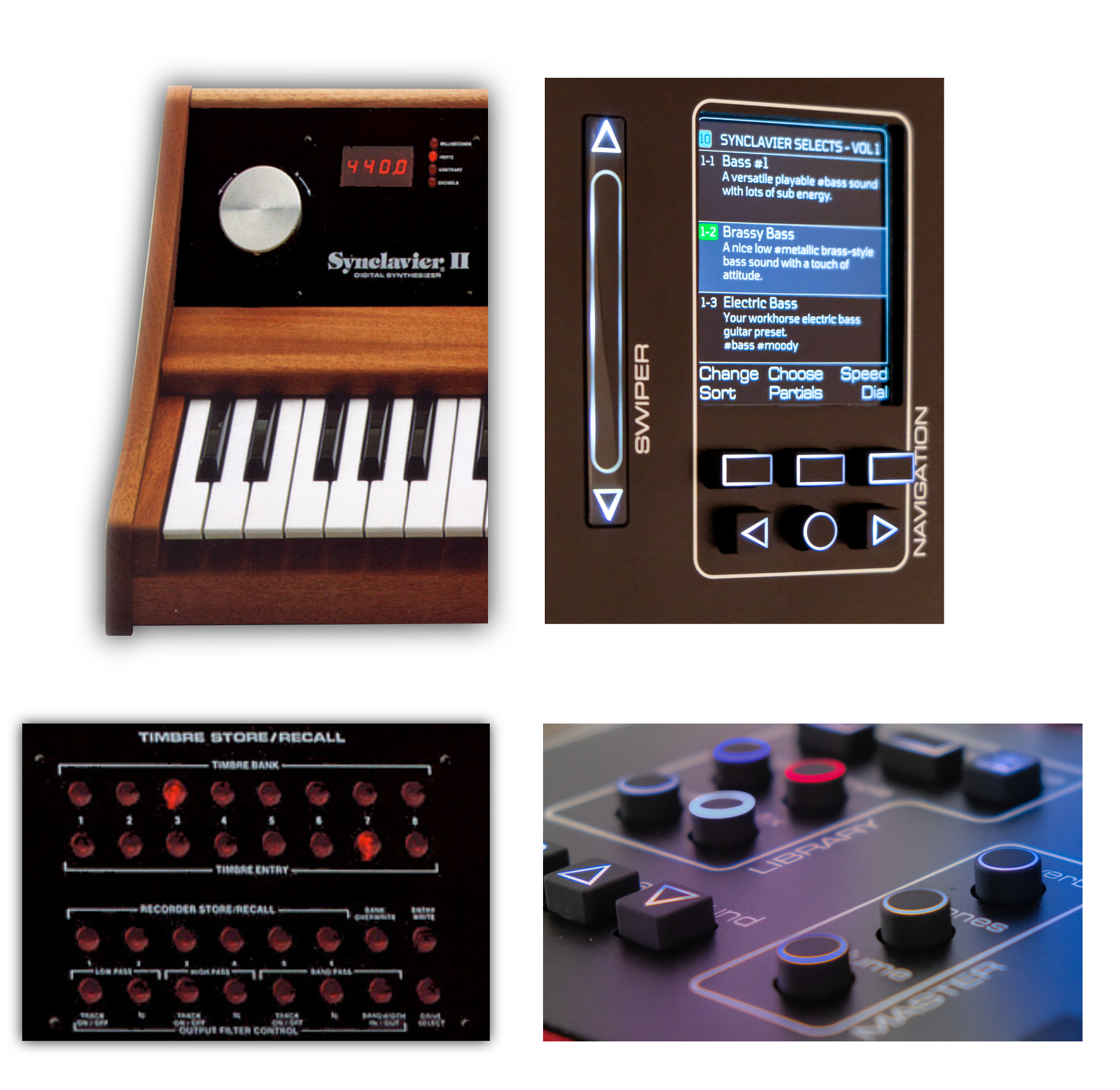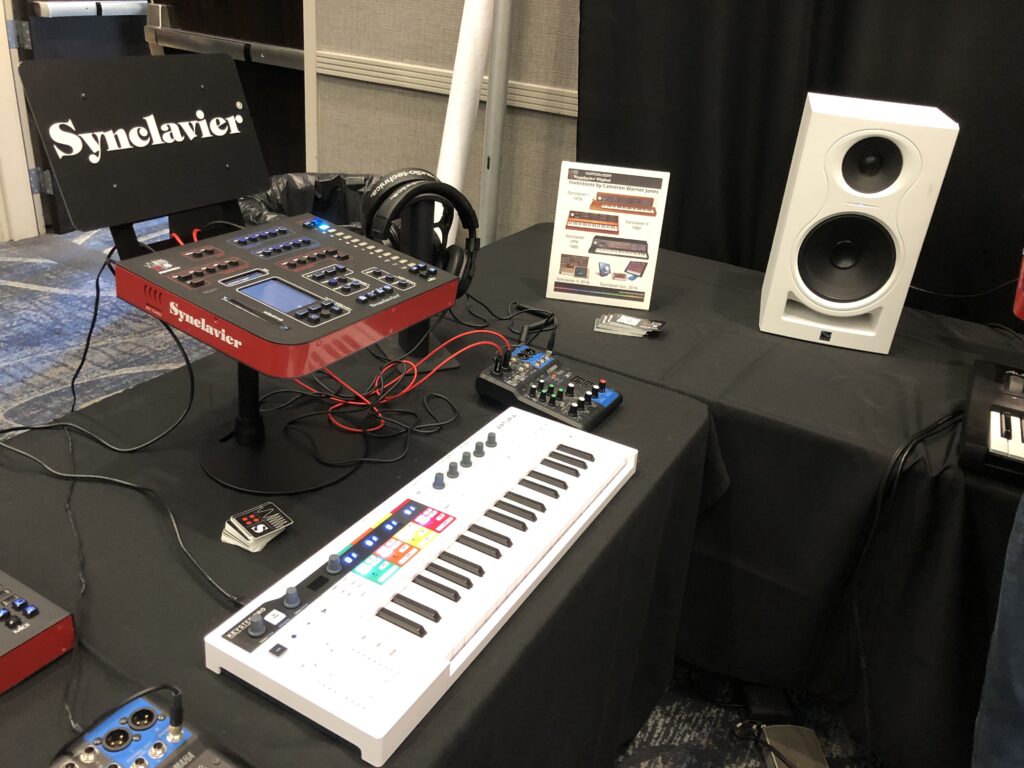Due to its price tag, size, and power consumption, the Synclavier II was always the reserve of pro studios. As an individual, you’d have to achieve the kind of success Michael Jackson, Frank Zappa, or Sting enjoyed, to justify owning one.
It’s estimated just over one thousand were sold during the product lifetime. Not a huge amount, certainly when compared to other keyboards of the era, such as the Roland Juno or Yamaha DX7. Of those 1000, around 200 are still in operation. That’s pretty good for a synth that’s just had its 43rd birthday.
The owners range from – composers that used Synclavier II extensively back in the eighties to, well, do their job, and couldn’t bear to part with it, even when they had amassed more compact and convenient synthesizers – to newer, younger synth enthusiasts that are hungry for that “Synclavier” sound.
These brave few must perform regular maintenance, occasionally scouring the internet for spare parts, and, in some locales, hoping when the next brown-out occurs on the power-grid, they only blow a fuse and not something more important.
It’s unsurprising then, that since the closure of NED, Cameron Jones has regularly fielded the question, “are you going to make another hardware Synclavier?”
Cameron got pretty good at deflecting it over the years, by quickly changing the subject, but in early 2020, between COVID-19 lockdowns, he and Craig Phillips, with whom he had collaborated with on the Synclavier Knob product, were sat drinking coffee and contemplating giving his customers what they’d so often asked for.
They’d just successfully ported the Synclavier synth engine to Linux. It took less than a week. “Well, that was easy,” said Cameron, “maybe it is time to do another hardware version.”
Nowadays there’s a proliferation of embedded compute modules that run Linux. Cameron tasked Craig with researching the specs of these modules to see if any of them were up to the task of being the new brain of Synclavier, just, “for fun,” as he put it.
And so began the development of Synclavier Regen.
Craig had just had a baby and his wife was on maternity leave for 12 months. “You better have it finished and generating income when I go back to work,” she said. “Because you’ll be looking after our daughter then.”
“No problem,” replied Craig.
It took over two years to develop. Still, pretty impressive for a two-man team. Craig had to juggle many evenings and weekends, but thankfully his baby was a good sleeper, otherwise there may never have been a Regen.
A desktop incarnation certainly seemed like the right product category. It would require less development time, and carry less financial risk, than a full-sized synth with a keyboard, but still present an enticing prospect for a would-be customer; it was thought that for the vast majority of customers, Regen wouldn’t be their first synth, so the assumption was they’d already have a suitable MIDI keyboard to use with it.
After selecting a powerful multi-core compute module, the most important task was to get the sound right. Which meant creating a capable DAC circuit with a careful PCB layout and sourcing high quality components.
Cameron had tested a number of off-the-shelf DACs of various costs. Some had an excellent frequency response linearity, but quite a bit of noise. Others had low noise floor, but bad frequency response.
When he tested the first prototype Craig provided, he ran his set of tests while Craig waited with bated breath. Cameron finally spoke. “The frequency response is the best I’ve tested.”
“And what about the noise floor?” asked Craig.
“It’s low. Very low. I think the noise I’m seeing is probably from my measuring equipment.” Cameron smiled. “I think we have a product here.”
The Synclavier II had 160 buttons; way too many for a desktop incarnation. After eliminating a few ideas, they were able to settle on a panel layout for Regen with 50 buttons plus the 12 selector buttons.
Pressing a function button from one of Regen’s seven “panels” brings the function’s “page” to the screen and reveals its three parameters on the “soft” option buttons below the screen. If a function has more than three parameters, you have to navigate left or right to reveal more, typically less-often-used, parameters. This seemed like the best compromise between buttons and useability, and, importantly, doesn’t feel like (the dreaded) menu-diving most of the time. Some menu diving was inevitable: the Filter, Effects and Define buttons, with their multitude of settings, do harbour subpages.
“The way, we’ve laid it out,” says Cameron, “there’s enough spacing that you don’t go accidentally hitting the wrong button. We really didn’t want it to be fiddly. And the way Craig has done the panel borders and colour-coding, it really helps your brain and muscle memory, which is always important for a musical instrument.”
Another thing Craig did, was to refresh the look of the buttons. The original red buttons with little Fresnel lenses aren’t available now. Cameron had requested that Craig model them, and use modern manufacturing techniques to produce something similar, as he had done with the knob, but that idea was soon dismissed in favour of an updated look that had a nod to the original.
The outlined button shapes are laser-etched in the silicone and back-lit by LEDs. It would’ve been easier to source one white LED and colour the buttons themselves, but this approach gives the buttons a satisfying otherworldly glow, especially in a darkened room, and it has the side-benefit that some of the buttons can switch colour based on function by using a RGB LEDs.
All this had to be designed, prototyped, redesigned and perfected. The value Swiper was something that Craig and Cameron had to get right. The Synclavier synth engine has a such a symbiotic relationship with the knob, that if they were to have the audacity to offer an alternative, it better work well.
With a combination of a state-of-the-art capacitive touch chip and Cameron’s custom hysteresis software, they were able produce something that was reliable and accurate, and slick: a real joy to use. Such was the success of the new vertical Swiper, that Cameron insisted that the 12 selector buttons be implemented in the same way.
A boon of Synclavier II was the swipe-able nature of those iconic red buttons. Being able to quickly select several partials at once then change their parameters in unison was something both intuitive and efficient. Something trivial to recreate decades later on the touch screen of the iPad app, Synclavier Go! It turns out it’s much harder to do this effectively with multi-coloured LEDs in the vicinity of the touch pads, creating lots of stray capacitance. Indeed, Synclavier Digital’s patent application for Regen covers the engineering of the Swiper and Selector buttons. It took 4 iterations of PCB to get the Selector buttons working correctly and the finer points of how this was achieved will remain a trade secret.
With the interface perfected, Cameron spent many hours on graphics software for the screen. “Having that much more real-estate than its predecessor,” says Cameron, “and Regen’s screen being multicolour, it would’ve been a crime not to make good use of it.”
Cameron coded graphical representations of everything: modulation mapping functions, filter response curves, keyboard ranges, and so on, all making the machine easier to use. It quickly became, not only an evolution of the original, but truly its own instrument, hence the name, Regen.
“Looking at this synth now,” says Craig, “and the complexity of it, both hardware and software, it seems unreal that we completed the development. But, back when Cameron and Sydney Alonso were working on Synclavier II together, that was a monumental achievement too.
“During the two years, we hit many brick walls; if I hit one and ran out of steam, Cameron would chip away at the problem; if he hit one, I would take a swing for a while. We work together very well and I’m extremely proud of what we’ve built.”
The finished product certainly has that feel of a boutique synth crafted by a small team of people that care, rather than a device specified by committee to hit a certain price point. It has “soul” as Loopop put it in the first video featuring Regen to hit YouTube.
Having such a small team, meant they were able to keep it under wraps until its launch at Synthplex back in October. “The first day,” says Craig, “people were walking by us without so much of a glance. But I think the surprise launch caused a lot of internet chatter, and by the Sunday, people were seeking our booth out. We were inundated with visits from musicians, producers, hobbyists, movie composers, other synth manufacturers, and journalists. And pre-orders were rolling in, which was something of a relief; it’s one thing knowing you have a fantastic product, but it’s another thing to convince other people.”
Cameron enjoyed the experience at Synthplex. And when he met with many of his existing customers, he no longer had that question to deflect.
More information on Regen can be found here.



